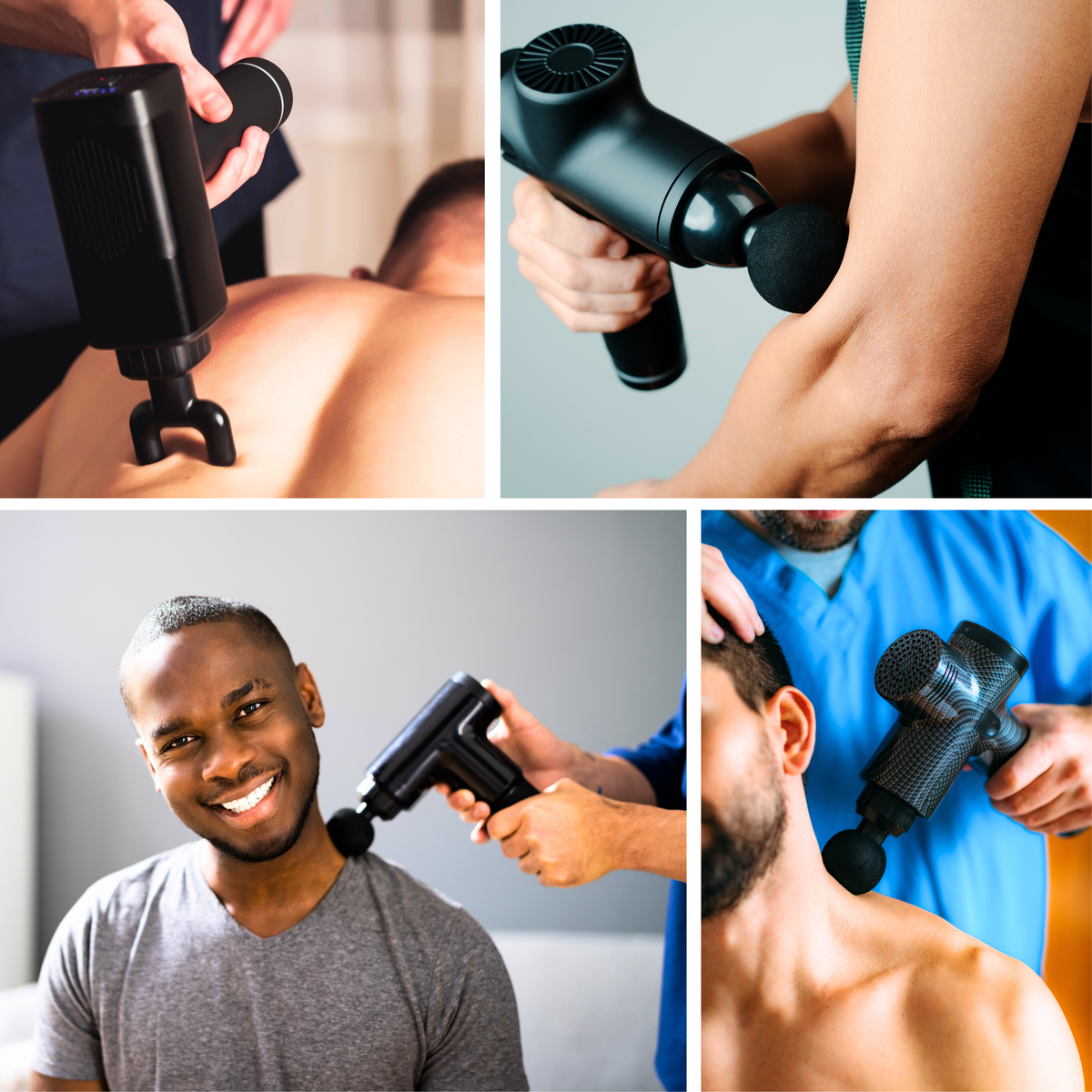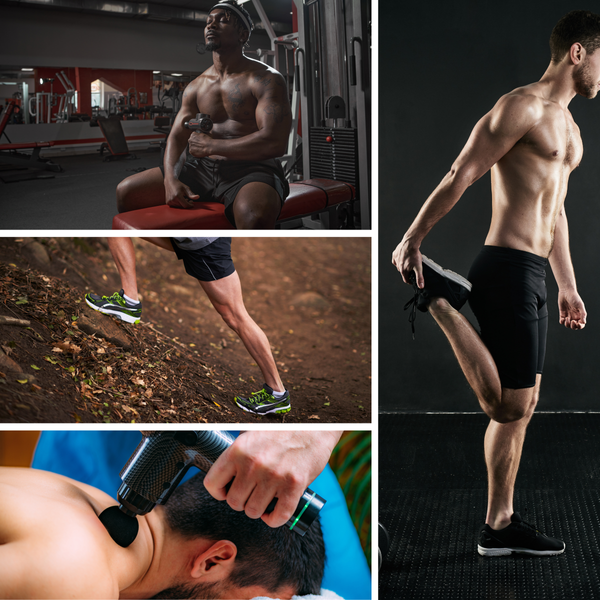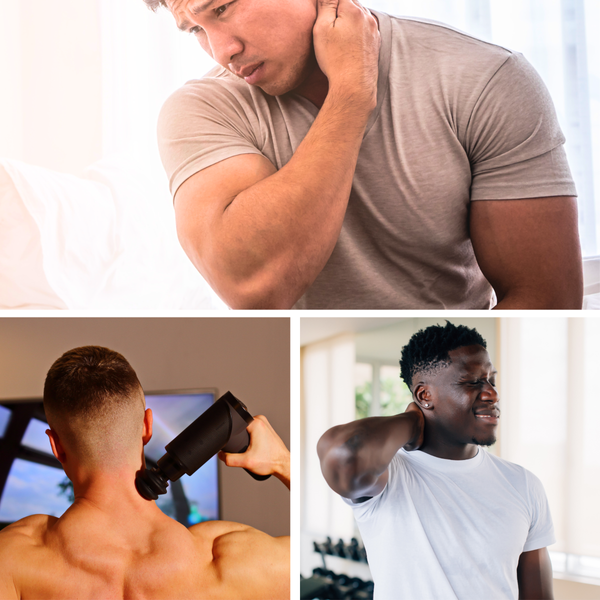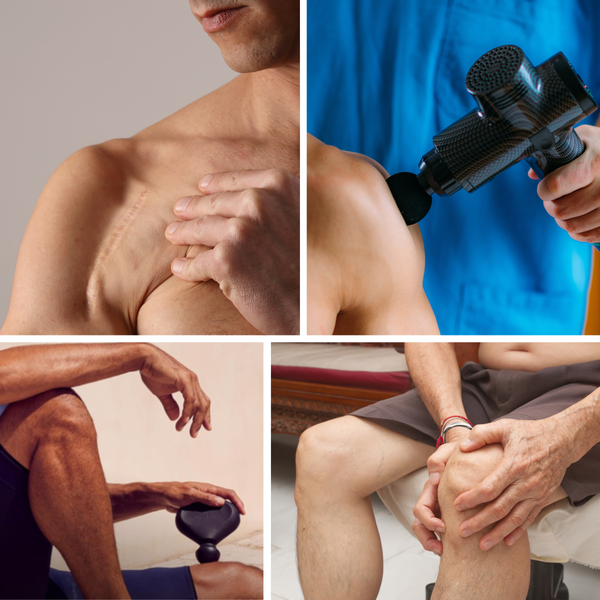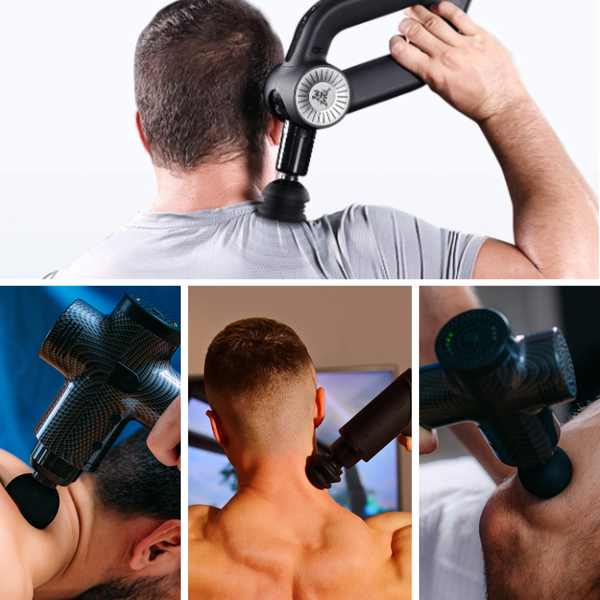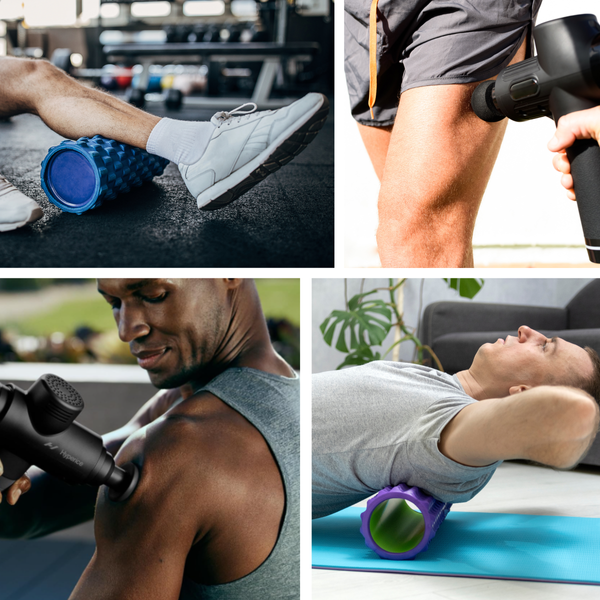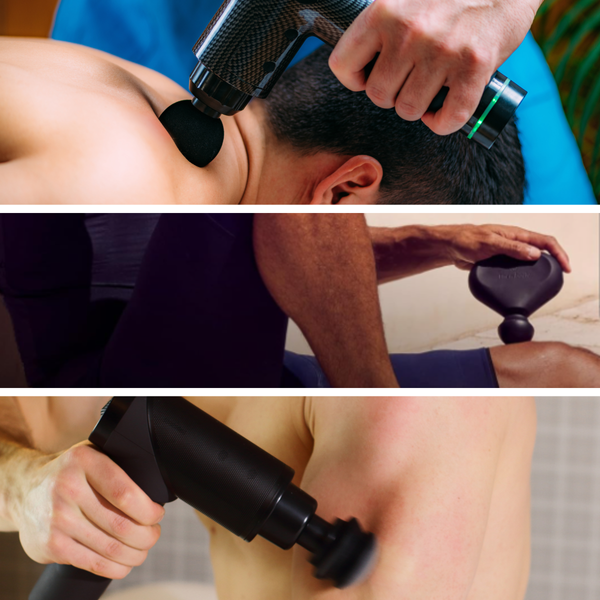Massage guns have become a staple in the fitness and wellness community, offering a convenient way to relieve muscle tension and aid recovery. But with their increasing popularity, a common question arises: how long is too long for a massage gun? This article will delve into the optimal usage time for massage guns, ensuring you get the most out of your percussive therapy sessions without overdoing it.
Key Takeaways:
- Understanding the ideal duration for massage gun use is crucial for muscle recovery and avoiding potential harm.
- Overuse of massage guns can lead to muscle damage, sensitivity, or bruising, especially in sensitive or recently injured areas.
- Consulting with a healthcare professional or a massage therapist can provide personalized guidance on massage gun usage.
Understanding Massage Gun Therapy
Massage guns, also known as percussive massagers, deliver rapid bursts of pressure into the muscle tissue, mimicking the effects of traditional massage therapy. This form of percussive therapy is designed to help muscles relax, reduce soreness, and improve blood circulation. However, the intensity and duration of using a massage gun are critical factors that can influence its effectiveness and safety.
The Science Behind Percussive Therapy
Percussive therapy works by delivering concentrated, rapid, and short-duration bursts of pressure into the muscle fibers. This action helps to break up scar tissue, reduce muscle spasms, and promote relaxation. The vibrations and oscillations from the massage gun can also help in reducing bodily pain perception by transmitting pain signals to the brain at a slower rate.

Optimal Duration for Different Muscle Groups
When using a massage gun, it's important to consider the size and sensitivity of the muscle groups being targeted. Larger muscle groups like the thigh muscles may require slightly longer sessions, while smaller or more sensitive areas should be treated with shorter durations. A general rule of thumb is to use a massage gun for up to two minutes on each muscle region.
Recognizing the Signs of Overuse
While massage guns work wonders for muscle recovery, overuse can lead to increased muscle fatigue, sensitivity, and even bruising. Pay attention to how your muscles respond during and after the session. If you experience skin discomfort or heightened sensitivity, it may be a sign to reduce the duration or intensity of the massage gun application.
The Role of Massage Guns in Athletic Performance
Athletes often use massage guns to activate muscles before a workout and promote recovery afterward. Percussion therapy can help in increasing blood flow and reducing lactic acid build-up, which are essential for optimal post-workout recovery and maintaining athletic performance.
Pre-Workout Activation vs. Post-Workout Recovery
Before a workout, a brief massage gun session can help to warm up and activate muscle areas, preparing them for physical activity. Post-workout, a longer session can aid muscle recovery by increasing muscle flow and reducing muscle soreness. However, it's important to tailor the duration to your body's needs and avoid overstimulation.

Addressing Muscle Soreness and Fatigue
Delayed onset muscle soreness (DOMS) is a common issue for many, and using a massage gun can be an effective way to reduce muscle soreness. By increasing blood flow and breaking down lactic acid build-up, massage guns can help alleviate the discomfort associated with sore muscles.
Chronic Pain and Muscle Knots
For those dealing with chronic pain or muscle knots, massage guns can offer relief by targeting trigger points and tight muscles. Consistent use can help to break down fibrous tissue and relieve muscle tension, but it's crucial to avoid overuse, which could exacerbate pain or cause further muscle damage.
Customizing Massage Gun Settings for Each Muscle Group
When it comes to using a massage gun, one size does not fit all. Different muscle groups can benefit from varying levels of intensity and speed. For instance, larger muscle groups like the quadriceps or glutes may require a more robust setting to penetrate deeply and effectively reduce muscular stiffness. On the other hand, smaller or more sensitive areas, such as the muscles around the neck, may need a gentler approach to avoid discomfort. Consulting with a physical therapist can provide personalized guidance on the optimal settings for each muscle group, ensuring that you maximize the benefits of your relaxation massage guns.
Understanding the nuances of each muscle group's needs can significantly enhance the effectiveness of vibration therapy. For example, areas prone to lactic acid build-up, such as the calves after a long run, might benefit from a medium-intensity setting to facilitate optimal post-workout recovery. By customizing the massage gun's settings, users can target specific soft tissues with precision, helping to increase muscle mobility and alleviate post-exercise soreness. Remember, the goal is to tailor the experience to your body's unique requirements, which can vary from one session to the next.
Integrating Massage Guns into Your Workout Routine
Incorporating a percussion gun into your workout routine can be a game-changer for both pre-workout activation and post-workout recovery. Before exercising, a brief session with a percussive massager can help to wake up the muscles, increasing blood flow and preparing the soft tissues for the physical activity ahead. This can be particularly beneficial for those looking to enhance their performance during high-intensity workouts or sports. By using the massage gun for just a couple of minutes on each major muscle group, you can help prevent injury and improve your overall workout efficiency.

Post-workout, percussion massagers play a crucial role in recovery. They can help to reduce lactic acid build-up, which is often responsible for the soreness experienced after intense exercise. By incorporating a massage gun into your cool-down routine, you can assist the body in its natural recovery process, reducing muscular stiffness and promoting faster healing. This practice can be especially helpful for athletes or fitness enthusiasts who engage in regular, strenuous workouts and require quick turnaround times between training sessions. With consistent use, a massage gun can become an indispensable tool for maintaining muscular health and achieving optimal post-workout recovery.
Massage Guns and Muscle Recovery
Massage guns are a popular tool to aid muscle recovery, especially after a full body workout. They help to relax tight muscles and promote relaxation, contributing to a quicker recovery time. However, the key is to engage targeted muscles without overworking them, ensuring the muscle fibers have time to heal.
Balancing Intensity and Duration
The intensity of the massage gun should be matched with an appropriate duration. Higher intensity sessions should generally be shorter to prevent muscle strain, while lower intensity sessions can be slightly longer to thoroughly work through muscle tissue and promote relaxation.
When to Use a Massage Gun
Knowing when to use a massage gun can make a significant difference in its effectiveness. It's ideal for use after a workout to promote recovery or during rest days to maintain muscle mobility. However, it should not be used on recent bone fractures or areas with acute inflammation.
Contraindications and Precautions
While massage guns can be beneficial, there are certain conditions where they should be used with caution or avoided altogether. People with certain medical conditions, such as those affecting the immune system or those with a history of blood clots, should consult a healthcare professional before using a massage gun.

The Importance of Technique
Using a massage gun correctly is just as important as the duration. Proper technique involves moving the massage gun slowly across the muscle region and avoiding bony areas. This ensures that the percussion massager is effective and reduces the risk of injury.
Combining Massage Guns with Other Therapies
For a comprehensive approach to muscle care, consider combining massage gun sessions with other therapies such as heat therapy, stretching, or professional percussion massage. This multi-faceted approach can enhance the benefits and contribute to overall muscular health.
Expert Advice on Massage Gun Usage
Consulting with physical therapists or experts in human movement science can provide insights into how long to use a massage gun for your specific needs. They can offer personalized advice based on your body's response to percussive therapy and your fitness goals.
The Future of Massage Gun Therapy
As research continues to evolve, we may see more precise guidelines on the duration and frequency of massage gun use. For now, listening to your body and using the tool responsibly is the best way to ensure safe and effective use.

Summary
Massage guns are a powerful tool for relieving muscle tension, aiding recovery, and enhancing athletic performance. However, it's essential to use them correctly to avoid overstimulation and potential harm. Up to two minutes per muscle region is a general guideline, but always listen to your body and adjust accordingly. Remember to consult with healthcare professionals for personalized advice, especially if you have pre-existing conditions.
FAQ Section
Q: Can I use a massage gun every day?
A: Yes, you can use a massage gun daily, but it's important to monitor your body's response and adjust the frequency and duration to avoid overuse.
Q: How do I know if I'm using the massage gun for too long?
A: If you experience increased pain, bruising, or sensitivity in the muscles, it may be a sign that you're using the massage gun for too long or with too much intensity.
Q: Should I use a massage gun before or after a workout?
A: A massage gun can be used both before to activate muscle areas and warm up, and after a workout to promote recovery and reduce muscle soreness. Adjust the duration and intensity based on your activity level and recovery needs.



